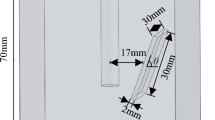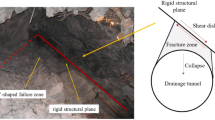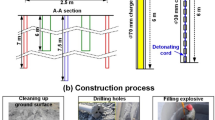Abstract
Misconstruing that buried pipelines do not lead to catastrophic failures while other constructed structures are deemed susceptible to failure is not uncommon. This paper presents some innovative research methodology underpinned by case studies to endorse that design and construction of buried pipelines need amenable interdisciplinary communications between materials, hydraulic, geotechnical, structural, and construction engineers. An initial outline sets the scene for the gravity of consequences from buried pipeline failures. The paper proceeds to expound related reasons and intelligent infrastructure solutions arising from forensic investigations of such failures. The inevitable influences from material aging and geo-environmental effects on a variety of pipeline projects are then presented. It is more the reason that smart contractors need to vigilantly adhere to contract specifications of a project, appreciating the significance of the variability in the foundation soil, geo-environmental, and construction hazards. Further attempts were made to distinguish between pipeline failures consequential to factors over and above soil–pipeline interaction influenced by soil loads surrounding the pipe. Shortsighted, hasty decisions in construction practice to economize on time and construction costs will lean toward collapse, resulting in unforeseen ancillary costs. The author shares his expert evidence experience and innovative, sustainable research solutions covering different failure scenarios. The paper further presents unorthodox geotechnical and material investigations and smart engineering solutions carried out by his numerous postgraduate researchers and others within a pipeline research group in the UK. The cases cited will hopefully enthuse the quest of interested readers to develop further through the references cited, the need for lateral and logical thinking “outside the box” for forensic geotechnics and pipeline engineering.













Similar content being viewed by others
References
Piratla KR, Yerri SR, Yazdekhasti, Cho J, Koo D, Matthews JC (2015) Empirical analysis of water-main failure consequences. International Conference on Sustainable Design, Engineering and Construiction. Procedia Eng, Elsevier. 118 pp 727–734 (2015). www.sciencedirect.com
Ambler A (2020) The Economics of Water Main Failures. Water Finance & Management. https://waterfm.com/the-economics-of-water-main-failures/
Carper KL (2001) Why buildings fail, National council of Architectural registration board Monograph. Professional Development Program. 10
Jeyapalan J (2018) Advances in underground pipeline design, construction, and management. www.civic-enterprises.com
Alzabeebee S (2019) Response of buried uPVC pipes subjected to earthquake shake. Innov Infrastruct Solut 4:52. https://doi.org/10.1007/s41062-019-0243-y
Janson LE (1999) Plastic pipes for water supply and sewage disposal, Borealis, Stockholm (1999)
Choollun VK, Wijeyesekera DC, Potter R (2004) Photoelastic method to determine residual stress profiles in Pipes, Plastic Pipes XII, Italy
Choollun VK, Wijeyesekera DC, Potter R, Walsh JW (2009) Photoelastic method revisited for residual stress measurement in high-density polyethylene pipes. Proceedings of the AC&T. pp. 95–101, University of East London
Choollun VK (2008) Residual stresses in high-density polyethylene pipes with particular reference to its effects on soil-pipe interaction. Ph.D. Thesis, University of East London, UK
De Havilland Etienne A (1999) Use of U-PVC pipe in St. Lucia. M.Sc Thesis, University of East London, UK
Maheswaran V (2004) Soil- pipe interaction with particular interest to cast iron pipe failures. Internal Research Report, University of East London, UK
Arnold GE (1960) Experience with main breaks in four large cities. Annual Conference, Bal Harbour, Fla. J Am Water Works Assoc. 1041–1059.
Jarvis MG (1997) Factors affecting the risk of corrosion to iron pipes and pipe fracture potential in London. Cornfield University. 81/4096
Makar JM (2000) A preliminary analysis of failures in grey cast iron pipes. Institute for Research in Construction, National Research Council of Canada.
Hsu CY (2001) Failure investigations of small diameter cast iron pipes using scanning electron microscope & x-ray analysis. MSc Thesis, University of East London, UK
Reedy DR (1966) Corrosion in the waterworks industry. Mater Prot 5(9):55–59
Borana L, Yin JH, Singh DN, Shukla SK (2016) Interface behaviour from suction controlled direct shear test on completely decomposed granitic soil and steel surfaces. Int J Geomech ASCE. https://doi.org/10.1061/(ASCE)GM.19435622.0000658
Argent CF, Furness RR (1985) Corrosion in soils Soil survey technology. Monograph 13:135–146
Edil T, Bahmanyar NR (1983) Stress in buried conduits caused by freezing front. Cold Reg Sci Technol 8:129–137
Pocock RG, Lawrence GJL, Taylor ME (1980) Behaviour of shallow buried pipeline under static and rolling wheel loads. TRRL Laboratory Report 954
Zhan C, Rajani B (1997) Estimation of frost loading in a trench theory and experiment. Can Geotech J 34:568–579
Reginold JT (2006) Rocker pipe solution to alleviate differential settlement induced distress in flexible pipes. Ph.D. Thesis, University of East London, UK.
Olliff JL, Rolfe SJ, Wijeyesekera DC, Reginold JT (2001) Soil-structure-pipe interaction with particular reference to ground movement induced failures. Plastic Pipes XI. 941–950, Munich, Germany. (2001)
Olliff JL, Rolfe SJ, Wijeyesekera DC, Reginold JT (2003) Settlement induced failures of plastic and other pipes, Plastic Pipes XII, Soil-structure-pipe interaction with particular reference to ground movement induced failures. Plastic Pipes XI, Italy
Maffra CRB, Sutili FJ (2020) The use of soil bioengineering to overcome erosion problems in a pipeline river crossing in South America. Innov Infrastruct Solut 5:24
Wijeyesekera DC, Reginold JT (2006) Rocker pipe- A solution for differential settlement induced distress in pipeline ASME 6th International Pipeline Conference Proceeding, Calgary, Canada
Selvadurai APS (1985) Mechanics of soil-pipe interaction. Proceedings of the ASCE Conference, Calgary, Alberta. 151–173.
Newport DJ, Wijeyesekera DC, Edwards KE (2004) Manufactured aggregate as imported backfill material for plastic pipes. Plastic Pipes XII, Milan, Italy
Abdel-Rahman K, Gerlach T, Achmus M (2020) Numerical investigations on rigid and flexible pipelines embedded in granular and self-compacting materials. Innov Infra Solut 5:69
Marston A, Anderson AO (1913) Iowa engineering experiment station. Bulletin No. 31
Marston A (1930) Iowa engineering experiment station. Bulletin No. 96
Schlick WJ (1932) Loads on pipes in wide ditches. Iowa Engineering Experiment Station, Bulletin No. 108
Spangler MG (1948) Underground conduits – an appraisal of modern research. Transactions ASCE 113:316
Algood JR, Ciani JB (1968) Influence of soil modulus on the behavior of cylinders buried in sand. Highway Research Board 249:1–13
Luscher U (1966) Buckling of soil surrounded tubes. J Soil Mech Found Engng ASCE 92(SM6):137–170
Mouser GF (1979) Basic pipe stress evaluation summary. Transp Engng J Proc Am Soc Civ Engrs. 105(TE4):349–359
Compston DG, Gray P, Schofield AN, Shan CD (1978) Design and construction of buried thin-walled pipes. Construction Industry Research and Information Association. Report No. 78
Warnakulasuriya HS (1999) Soil structure interaction of buried pipes. Ph.D. Thesis, University of East London, UK
Wijeyesekera DC, Warnakulasuriya HS (2000) Effects of soil arching on the behaviour of flexible pipes buried in trenches of varying widths. GeoEng 2000, Melbourne, Australia.
Lawrence C (1987) Fatigue loading as the basis of a quality control procedure. Proc. 10th plastic fuel gas pipe symposium. American Gas Assoc. New Orleans, USA. 373–378
Reynolds PT, Lawrence CC (1991) Deformation and failure in polyethylene: correlation between mechanisms of creep and fatigue. J Mater Sci 26:6197
Ansell G, Lawrence C, Potter R, Teo S (1998) Product development using the dynamic (cyclic pressure) test method as an effective comparative tool Plastic Pipes X. Gothenburg, Sweden, pp 525–534
Wallace WL, Ray KWC, Sham JFC (2018) A blind test of non-destructive void detection by ground penetrating radar(GPR). J Appl Geophys 149:10–17
Haibat A, Jae-ho C (2019) A review of underground pipeline leakage and sinkhole monitoring methods based on wireless sensor networking. Sustainability 11:4007. https://doi.org/10.3390/su11154007
Zhi S, Pu W, Mehmet CV, Mznah AA, Abdullah MA (2011) MISE-PIPE: Magnetic induction-based wireless sensor networks for underground pipeline monitoring. Ad Hoc Netw 9:218–227
Karray F, Garcia-Ortiz A, Jmal MW, Obeid AM, Abid M (2016) EARNPIPE: A test bed for smart water pipeline monitoring using wireless sensor network. Procedia Computer Science 96:285–294
Acknowledgements
The author feels humbly indebted to all his students referenced and not referenced in this paper but diligently carried out research meeting their research objectives, thereby quenching his thirst for knowledge. He thus gratefully acknowledges the contributions from many of his postgraduate research students, some of whose research remained unpublished. He gratefully appreciates the support from the University of East London, UK, and the Universiti Tun Hussein Onn Malaysia, Johor Malaysia.
Author information
Authors and Affiliations
Corresponding author
Ethics declarations
Conflict of interest
The author declare that they have no conflicts of interest.
Rights and permissions
Springer Nature or its licensor (e.g. a society or other partner) holds exclusive rights to this article under a publishing agreement with the author(s) or other rightsholder(s); author self-archiving of the accepted manuscript version of this article is solely governed by the terms of such publishing agreement and applicable law.
About this article
Cite this article
Wijeyesekera, D.C. Forensic geotechnical investigations into varied pipeline failures. Innov. Infrastruct. Solut. 6, 221 (2021). https://doi.org/10.1007/s41062-021-00583-0
Received:
Accepted:
Published:
DOI: https://doi.org/10.1007/s41062-021-00583-0




